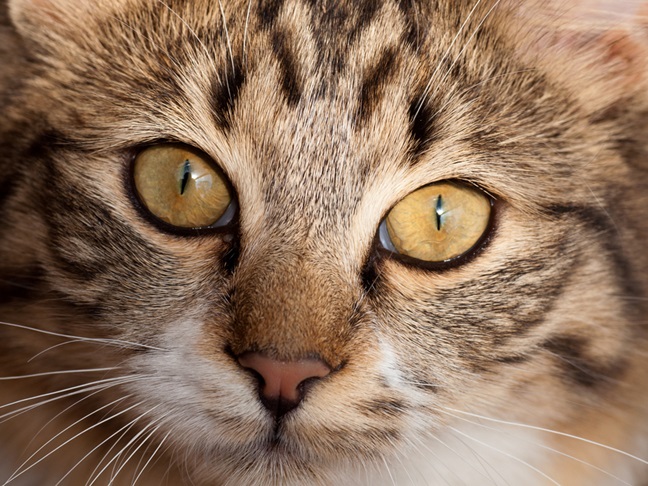Sun Protection
You know what they say—you can tell the heat of the day by the length of a sleeping cat. It’s very true. When cats are hot, they tend to stretch out. But that doesn’t mean that they will automatically try to find a cool place in which to sprawl out. The sun’s rays are harmful to pets, too. Cats who have an indoor-only lifestyle are still susceptible to sun damage because the sun’s harmful rays can penetrate glass. A cat that lies in the sun too long can get sunburned (solar dermatosis) on the delicate hairless areas of her body, namely the nose, ears, and any pink spots on her tummy that have less hair. She can even suffer sunburn on the pads of her paws, especially if they are pink. There are special sunscreens for pets offering protection against both UVB and UVA radiation.
As with humans, the biggest problem concerning excessive sun exposure is that it can lead to skin cancer, which is especially common in cats with pink skin and white fur. What can appear to be a harmless scratch on the face, particularly on the nose and ears, could be the start of solar-induced squamous cell carcinoma. Crusty sores on the tips of the ears, the lips, and the nostrils may also indicate skin cancer. Often, affected areas are itchy, and scratching tends to make the skin even more red and inflamed.
Veterinary evaluation is necessary if you find any spots or lesions that seem suspect. But sadly, by the time medical intervention is usually sought, it’s often too late and the cancer literally eats away the affected areas. Treated in its early stages, squamous cell carcinoma can be cured.
Daily Dental Care
While it’s important for your cat to have an annual dental cleaning done by a veterinary professional, it’s equally important to try and establish some kind of dental hygiene routine at home, too. Dental problems start in your cat’s mouth the same way they do in yours. By not taking care of your teeth, you develop plaque, which is nothing more than bacteria buildup on the teeth. And if the plaque is not removed, the minerals in saliva combine with the plaque to form tartar. This in turn irritates the gums and causes gingivitis, which makes the gums around the teeth look red and inflamed and causes bad breath! Once your cat has gingivitis, the inflammation causes the bone around the roots of the teeth to begin to deteriorate. The teeth then become loose and fallout. This stage of deterioration is called periodontal disease, and the damage is irreversible.
Admittedly cats are not too happy about having their teeth brushed on a daily basis. If you are going to try this, then it’s important to start from a very young age to get her used to the idea. Apart from special feline toothbrushes and pastes, there are various other products designed to help maintain good dental hygiene such as finger gloves, which you can rub along her teeth and gums. There are additives that can be added to the water bowl too.
Dr. Jan Bellows of Weston, Florida, who is one of a handful of specialist veterinary dentists registered worldwide, suggests taking a cotton swab dipped in tuna juice and rubbing it along your cat’s teeth. Because cats like the taste, you stand a good chance of working your way around the mouth. If not, what you don’t achieve today you can do tomorrow. Just keep at it! The mere friction of the cotton swab on the teeth is enough to actively reduce plaque buildup.








